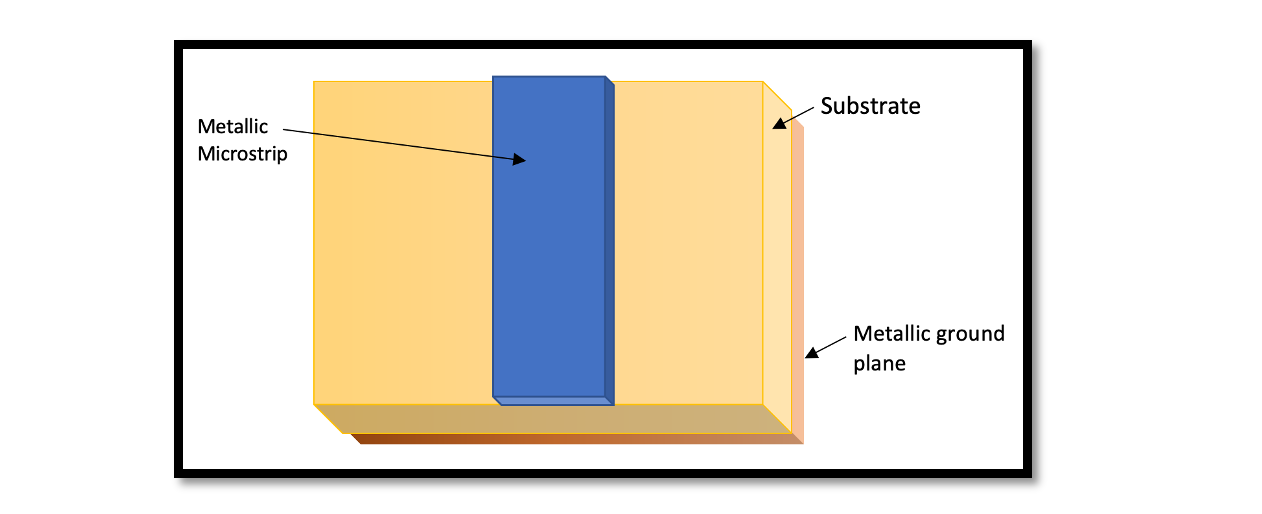
Design of Low Noise Amplifier Using Micro Strip Transmission Lines
Introduction
The design of low noise amplifiers (LNAs) plays a crucial role in various applications such as wireless communication systems, radar systems, and satellite communication. Among the myriad of techniques available, the utilization of microstrip transmission lines stands out as a prominent choice due to its versatility and ease of integration. In this article, we delve into the intricacies of designing LNAs using microstrip transmission lines, shedding light on their fundamental principles and characteristic features.
Understanding Microstrip Transmission Lines
Microstrip transmission lines have garnered immense popularity in microwave engineering owing to their ease of fabrication through photolithographic processes and seamless integration with both passive and active microwave components. These transmission lines comprise a simple structure consisting of a conductor strip placed atop a dielectric substrate, with a ground plane underneath. This configuration allows for efficient propagation of electromagnetic waves while confining the fields within the dielectric substrate, thereby facilitating miniaturization and integration.
Anatomy of Microstrip Lines
At the core of every microstrip line lies a slender strip of conductor, typically crafted from copper due to its commendable conductivity and cost-effectiveness. Positioned atop a dielectric material, this conductor acts as the signal trace, adeptly guiding electrical signals through the circuit with precision and efficiency.
Surmounting the conductor is the dielectric material, a pivotal component often composed of materials like FR-4, PTFE, or ceramics. This dielectric substrate dictates the pace at which signals traverse the microstrip line, a characteristic denoted by its dielectric constant (εr). Not only does this constant influence the line’s characteristic impedance, but it also plays a significant role in determining its overall performance.
Adjacent to the dielectric material rests the ground plane, typically a conductive layer beneath the dielectric substrate. Functioning as the faithful counterpart to the signal trace, the ground plane dutifully provides a return path for electrical signals, thus preserving signal integrity and mitigating the effects of electromagnetic interference. In concert with the conductor and dielectric material, the ground plane forms the foundational triad upon which the efficacy and reliability of microstrip transmission lines are built.
Calculating Characteristic Impedance
For a microstrip line with finite substrate thickness, the characteristic impedance (Z0) can be approximated using empirical formulas. One commonly used formula is derived by Wheeler, which provides a good approximation for microstrip lines with typical aspect ratios:

This formula assumes that the width of the conductor strip is much less than the substrate thickness (w≪h), which is often the case in practical microstrip designs.
It’s important to note that this formula provides a reasonable approximation for microstrip lines but may have limitations, especially for substrates with high dielectric constants or for microstrip lines with unconventional geometries. In such cases, numerical methods or advanced simulation tools may be required for more accurate impedance calculations. Once the characteristic impedance is determined, it can be used in the design and analysis of high-frequency circuits, such as low noise amplifiers, filters, and antennas, to ensure proper signal matching and optimal performance.
Design Considerations:
Designing LNAs using microstrip transmission lines entails careful consideration of various factors to ensure optimal performance. These include:
- Noise Figure: Achieving a low noise figure is paramount in LNA design to maintain signal integrity and fidelity. Microstrip transmission lines offer low loss and controlled impedance, contributing to overall noise performance.
- Gain: The gain of the LNA determines the amplification factor of the input signal. By optimizing the dimensions of the microstrip transmission lines and biasing conditions of active components such as field-effect transistors (FETs) or bipolar junction transistors (BJTs), desired gain levels can be attained.
- Bandwidth: The bandwidth of the LNA defines the range of frequencies over which it can effectively amplify signals. Microstrip transmission lines allow for tuning of the bandwidth by adjusting line dimensions and selecting appropriate substrate materials.
- Matching Networks: Proper impedance matching between the LNA and connected devices is crucial for maximizing power transfer and minimizing signal reflections. Microstrip transmission lines facilitate the implementation of compact and efficient matching networks, ensuring optimal performance across the desired frequency range.
Advantages and Applications:
The utilization of microstrip transmission lines in LNA design offers several advantages, including:
- Miniaturization: Microstrip technology allows for the miniaturization and integration of LNAs with other components, enabling compact and lightweight designs suitable for portable and space-constrained applications.
- Versatility: Microstrip transmission lines can be easily customized to meet specific performance requirements by adjusting line dimensions, substrate materials, and fabrication techniques, making them versatile for a wide range of applications.
- Cost-effectiveness: The fabrication of microstrip transmission lines using standard photolithographic processes offers a cost-effective solution for producing LNAs in large quantities, making them economically viable for mass deployment in consumer electronics and telecommunications infrastructure.
LNAs designed using microstrip transmission lines find widespread applications in various fields, including wireless communication systems, radar systems, satellite communication, and medical imaging equipment. Whether amplifying signals in wireless networks, enhancing radar detection capabilities, or improving signal reception in satellite communication links, LNAs play a vital role in advancing technology and enabling seamless connectivity in the modern world.

Learn more about this topic by taking the complete course ‘Microwave Amplifier and Low Noise Amplifier (LNA) Design Theory and Principles online course – RAHRF526’. Watch the course videos for more detailed understanding. Also checkout other courses on RF system and IC design on https://rahsoft.com/courses/. Rahsoft also provides a certificate on Radio Frequency. All the courses offer step by step approach.



